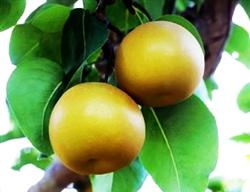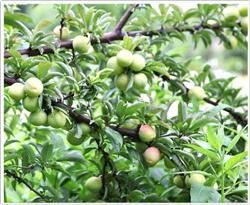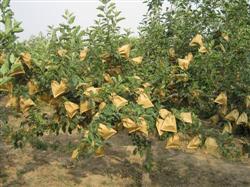Pre-harvest management of precocious honey pear

The cultivation area of precocious honey pear is expanding year by year, but due to the lack of scientific management means and methods, the premature senescence of pear trees appears, the result decreases year by year, the fruit quality is declining day by day, and the economic benefit is not good. In particular, due to the warm last winter, hot in early spring, late spring cold and other complex meteorological conditions, resulting in an increase in the base of diseases and insect pests. Therefore, the emergence of the current disease and insect pests early, multiple, re-occurrence phenomenon, therefore, pear farmers should focus on three aspects of management according to the specific situation. 1. Land fertilizer management: a shallow turning (combined with weeding) was carried out on the unploughed pear orchard in last autumn and winter, and a mung bean and Indian working bean were interplanted with conditions in spring; at the same time, a topdressing was carried out according to the tree potential and soil fertility. 0.2-0.3 kg of sulfur-potassium compound fertilizer was applied to meet the needs of young fruit growth and development. The poor drainage fields combined with ploughing can clear the ditch and drain well, reduce the humidity and reduce the occurrence of diseases. two。 Prevention and control of diseases and insect pests: from the current observation in Linhai and Xianju, it is found that pear stem wasps, aphids, leaf gall mites, leaf gall mites, sleeping leaf gall mites, pear bud-eating moths, curly leaf weevil, pear planthopper and other pests have entered the peak period this year, 7-10 days earlier than last year, so we should pay close attention to spraying control on sunny days, give priority to the case, highlight the key points, and treat others at the same time. Commonly used insecticides are: imidacloprid, dichlorvos, surprise No. 1, acaricide, Zhengrui, avermectin, Jiawei salt, etc., according to the instructions, do not blindly increase the dosage, so as not to cause drug damage and drug resistance. At the same time of pest control, fungicides should be used to treat rust, rot, ring disease, star disease and so on. Commonly used fungicides are Kaisheng, Xiansheng, Dasheng MMAE 45, trimethoprazole, sozolol, carbendazim, methyl thiophanate and so on. If the leaf gall mite is seriously harmful to the pear orchard, it should be sprayed again in late April or early May, and the pear planthopper and aphids should be treated at the same time. For the pear stem wasp harming the orchard, the lower part of the bitten twig 3-5 cm should be cut off and destroyed centrally in order to reduce the harm in the coming year. At the same time, foliar fertilizer is sprayed according to the needs of trace elements in the growth of fruit trees. The commonly used foliar fertilizers are: Cuikang Huaguoling series, Liangping, potassium dihydrogen phosphate, borax and so on. 3. Fruit thinning: control the amount of seedlings and fruits. Due to the serious flowers and fruits in last autumn and the cold in spring this year, the number of flowers and fruits in most pear orchards are less than those in previous years, so the number of remaining fruits should be appropriately increased to improve economic benefits. Fruit thinning should be carried out in stages, and the first fruit thinning can be carried out in mid-April when the size of the fruit is clear. Fruit setting should be finished at the end of April and early May to reduce nutrient consumption so as not to affect flower bud (primordium) differentiation and fruit in the coming year.
- Prev

Key points of management techniques for plum cultivation in greenhouse
In order to explore the technique of early fruit and early harvest of plums cultivated in greenhouse, an experimental study was carried out from 1997 to 2000. The winter shed was fastened in the second year, and the plum 1000kg was produced in the fourth greenhouse in 2000. The output value is more than 10,000 yuan, and the mature period is about 60 days earlier than that of open field cultivation. Through the experiment, we summed up the use of greenhouse to cultivate plums.
- Next

Prevention and Control of Diseases and insect pests before bagging of early Spring Pear
The disease and insect began to move before and after the germination of pear trees in early spring, and the bagging of pear orchards brought a lot of inconvenience to the spraying work. Therefore, pest control before bagging is the key to pest control in bagged pear orchard. In this period, we should focus on strengthening the control of pear planthopper, pear aphid, red spider and so on. (1) strengthen soil, fertilizer and water.
Related
- Moge, come on! The staff of the peasant association in the producing area of cantaloupe were frightened when the crowd gathered.
- Causes and Solutions of low Fruit setting rate of Apple
- Symptoms and control measures of passion fruit virus disease
- Fruit growing lesson: how do apple orchards keep high yields?
- Can you build orchards in the mountains? What are the pros and cons?
- How to manage the coloring period of Crisson grape?
- This paper introduces the processing technology of two kinds of fig products.
- How much is a month for retired teachers in rural areas by 2020?
- How can strawberry planting increase sugar content? We should pay attention to management in many aspects.
- What are the cultivation techniques on how to improve the yield of golden fruit?

